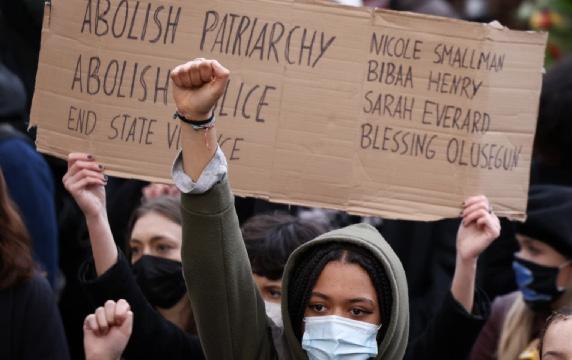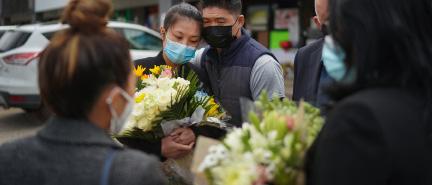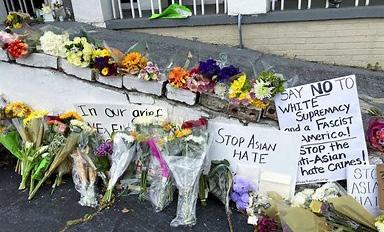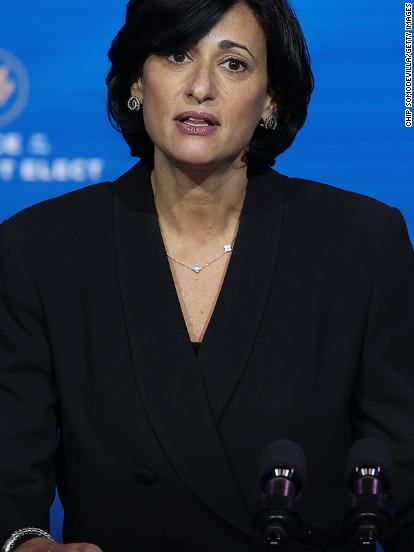
21 minute read
Czar’ for the royal palace
Follow @wandjcareerservices on Instagram
The Career Services Office would like to know if you are following us on Instagram? If you are not, you definitely should be! Not only will you be kept well-informed about the events and programs we sponsor, but you will be entered into raffles all semester long. Names will be drawn from our followers for great prizes such as: a limited edition HydroFlask, Starbucks gift cards, W&J swag, and much more!
Advertisement


Red & Black
Established 1909
Editor-in-Chief Managing Editor Campus News Editor Current Events Editor Diversity Editor Opinions Editor Sports Editor Social Media Manager Website Design Manager Distribution Manager Interim Faculty Advisor
Marcy Saldivar Erin Herock Reilly Oliverio Moll Kilbourne Amanda Fitzpatrick Paul Collier Nick Krugh Grace Depaul Raheem Clemons John Kiebler Kellin Cavanaugh
Current Events 7 Current Events

Queen Elizabeth Hires ‘Diversity Czar’
Queen Elizabeth responds to Oprah interview by hiring a ‘Diversity Czar’.

Courtesy Forbes
Sofia Jenkins Red & Black Staff
After Meghan Markle and Prince Harry’s bombshell interview with Oprah on Mar. 12, reports have been published saying Queen Elizabeth is hiring a ‘Diversity Czar’ for the royal palace. In the interview, Markle and Prince Harry accuse Queen Elizabeth and the royal family of racism and discrimination in their family and palace. All of this comes after Markle exposed that there were some saddening and infuriating conversations about Archie.
She told Oprah, “In the months when I was pregnant, all around the same time, so we have in tandem the conversation of he won’t be given security, he’s not going to be given a title, and also concerns and conversations about how dark his skin might be when he’s born.” This and along with many other situations is what made Markle and Prince Harry speak out about the problems, especially racism, in the royal family. In response to this, Queen Elizabeth is now taking action to improve this reputation. The royal family has repeatedly denied these allegations but are continuing actions to stop them.
The Queen not only has hired a diversity czar but is also requiring the royal family to engage in an upcoming “listen and learn” exercises in which the royals will “seek independent views” on how they can improve their inclusion of minority groups and the LGBTQ+ community.
A palace source recently said that, “This is an issue that is taken very serious across the Households.” They go on to say that the royal family stated, “We have the policies, procedures and programs in place, but we haven’t seen the progress we would like and accept more needs to be done. We can always improve.” Even though Prince William came out with a statement saying that “we are not a racist family,” Queen Elizabeth still seems to be taking this as a serious matter and handling is it internally. This interview held such influence on people everywhere that people everywhere and citizens of London are calling for Queen Elizabeth to be removed as head of state and for the idea of a royal family to be reconsidered.
London Murder Sparks #MeToo Movement Resurgence
Lekhya Kollu Red & Black Staff
The abduction and murder of English woman, Sarah Everard, ignited conversations about women’s safety across the U.K and internationally. Sarah Everard, a 33-year-old marketing executive, went missing on the walk back from a friend’s home in South London on Mar. 3. Everard followed many of precautions women are recommended to take when out alone at night— she wore bright clothing, stuck to well-lit roads and called her boyfriend during her walk—and yet, she still wasn’t safe. After a police search throughout southeast England, her remains were found in a wooded area outside London on Mar. 12.
A police officer, Wayne Couzens, has been arrested for her kidnapping and murder. Couzens, who had been arrested just three days prior to Everard’s disappearance for an alleged indecent exposure incident, is set to have his plea hearing on Jul. 9. In the days following Everard’s murder, women have used social media to share the precautions they have to take to feel safe in public spaces, from walking with their keys between their knuckles to pretending to be on a phone conversation when walking alone at night. Conversation has also included ways men can make women feel safer when they are alone at night, whether it is by keeping distance when walking, or switching over to the other side of the street when crossing paths. Many organizations planned vigils for Everard shortly after her body was found. Police, however, warned against the vigils, as the gatherings would violate COVID-19 restrictions. While some organizations did call off their vigils, others went ahead, including one on Clapham Common, a park near Everard’s last sighting. Police broke up this event and detained many attendees. Now, they face heavy criticism for their actions during the vigil, which included trampling memorials and holding down attendees by force. Home Secretary Priti Patel has said that she has ordered an independent inquiry of police activities during the Clapham vigil.
Everard’s murder has brought attention to global issues surrounding the harassment of women in public spaces. U.N. Women, a United Nations agency, has reported that in some of the world’s major cities, up to nine out of 10 women feel unsafe when out in public. The agency has urged the British government to do more to combat the problem of sexual harassment in public spaces.

Courtesy Al Jafreeza
Current Events 9 Atlanta Spa Attack Reveals Anti-Asian Racism

Courtesy New York Times
Victims of the hate crime are mourned in Atlanta.
Lekhya Kollu Red & Black Staff
On Mar. 16, eight people lost their lives in a series of shootings at three spas in the Atlanta area. The eight killed were identified as Xiaojie Tan, Daoyou Feng, Delaina Ashley Yaun Gonzalez, Paul Andre Michels, Soon Chung Park, Hyun Grant, Suncha Kim and Yong Ae Yue.
Of these eight, six were Asian.The shootings have brought attention to the epidemic of anti-Asian violence across many Western nations. Anti-Asian hate crimes have been on the rise due to the pandemic, as Western politicians like former President Trump continued to blame China for the outbreak of COVID-19, calling COVID-19 names like the “China virus.”While anti-Asian crime is nothing new in the US, hate crimes against Asians have more than doubled during the pandemic, according to the Center for the Study of Hate and Extremism at California State University, San Bernardino. Many Asian-Americans are facing instances of physical and verbal abuse due to the false belief that they were responsible for bringing COVID-19 the US.
Additionally, while the pandemic has hurt many businesses nationwide, Asian-American businesses have been disproportionately hit, as many people have chosen to avoid them due to fear or discrimination. The issue is not just an American one. Hate crime statistics from the UK show that between June and Sept. of 2020, there was a 96 percent increase in hate crimes against people of East Asian appearance compared to the same time from the previous year. Susana Ye, a Spanish journalist who made a documentary about Spain’s Chinese diaspora, says that crimes against Asians are severely underreported by the Spanish press. Victims themselves also tend to underreport crimes, due to language barriers, fears of deportation and a general tendency among older generations to stay silent when these incidents occur. “I think that people pick violence, verbal violence and physical violence because they don’t expect us to react at all,” Ye said. “They are used to us keeping a low profile.”In other European countries, like Belgium, Germany and France, it is hard to even get an idea about the scale of the issue, as these countries do not collect ethnicity data for historical reasons.
It is clear, however, that the wave of Anti-Asian sentiment has reached these countries as well. Security for All, an organization that represents more than 40 French Asian associations, estimates that in 2019 there was a hate crime against an Asian every two days in just the Paris area. Spokesperson for the organization, Sun-Lay Tan, emphasizes that Asians will no longer stay silent. “Our parents dealt with racism, but they accepted it because they wanted to integrate into the country,” he said. “We are the second generation of immigrants in France, our responsibility is to speak out.”
Diversity

Asian-Americans Fetishized in the U.S.
Akansha Das Red & Black Staff
On March 19, a gunman entered an Atlanta spa and shot eight women, six of whom were Asian. The gunman claimed he was “sexually addicted to the temptations’ that [these Asian workers] offered” and has opened the conversation about the fetishization of certain ethnicities – specifically of Asian women.
There is a sickening juxtaposition that comes about when studying the history of sexual perceptions of Asian women. In her book “Hypersexuality Of Race,” film scholar Celine Parreñas Shimizu says after the US invaded Korea and many soldiers brought home “war brides,” pornography came about that romanticized this hierarchical relationship. She says, “This was the first time that Asian women were in pornography that I saw, versus white women in yellowface. They were romanticizing the compatibility of a docile war bride, as an ideal American wife, because she was sexually servile but also a domestic servant.”
The tragedy in these ideas of these stereotypes is that Asian women are submissive and docile and make good housewives yet they’re also physiologically different and “temptresses” are that they are both identities and roles meant to serve others, yet neither capture the complexity and humanity that every woman deserves. And this leads to a dangerous slippery slope towards dehumanization and the attack on Asian spas we saw last week.
Yet it’s also important to consider how our systems have reinforced these stereotypes in our society. Nancy Wang Yuen, a sociology professor specializing in race and ethnicity in media at Biola University says that American pop culture has almost singularly captured Asian women as a prostitute (citing the 1987 movie “Full Metal Jacket”) or an “exotic lotus flower” who dies at the end of the movies only further fostering the juxtapositional stereotype of Asian women and falsely giving all Asian women an air of “want it but can’t have it,” in Yuen’s words. Shimizu expands on this saying that even before “Full Metal Jacket,” productions like “The Good Woman of Szechuan” in 1880s and “Madame Butterfly” in 1904 both exploited this notion that women are so sexually accessible and will continually and constantly love, even if they are not loved back.
The roots of these perceptions in the media – largely US invasion of Asia during the Vietnam and Korean war – has engendered these stereotypes. For starters, the idea in our politics that Asia is a place to dominate and take over may have inadvertently translated into disgusting idea that Asian women are “something to takeover or take possession of.” When American G.I.s would travel to Asian countries, camp towns with many sex workers would pop up for Asian women to survive and earn money. The prevalence of camp towns around G.I. bases also helped feed the notion that soldiers could have inexpensive and constant access to Asian bodies and that Asian women merely served for the pleasure of White men. U.S. legislation has only perpetuated these stereotypes, particularly the Page Act of 1875 (which preceded the Asian Exclusion Act of 1882) which banned prostitutes (and inevitably – many Asian women because of past stereotypes) from entering the country.
While the racial awakening America is currently having has certainly fostered the conversations on stereotypes of Asian women, actively combating these perceptions through continued education of all (especially of law enforcement, one of whom who justified the gunman’s actions as “having a bad day”) and fairly representing Asians in media is the only way citizens can get through this.

Courtesy Houston Chronicle
Diversity 11 COVID-19 Impacts Mental Health
Alex Wagner Red & Black Staff
It is crazy to think the world is over a full year into the COVID pandemic, and it feels like not much has changed in the past few months. Obviously, the beginning was the worst, but little did the world know that this was something that would become normal, well into the year 2021.
Beyond the physical health of the public, one very important aspect one must not forget, especially as a college campus and community, is the heavy impact this pandemic has had on everyone’s mental health. The early months of the pandemic showed a clear and drastic change in the mental health of both students and adults; Life had changed as everyone knew it, leaving us grasping for anything normal, but ultimately feeling lonely and strange.
The CDC has included a section on their website to address these concerns of mental health, as they are just as important as those who have been physically affected by the virus.
“The COVID-19 pandemic has had a major effect on our lives. Many of us are facing challenges that can be stressful, overwhelming and cause strong emotions in adults and children,” according to the CDC.
Many who had already been dealing with mental health issues have unfortunately gotten worse over the past year. In comparison, those without any mental health issues have seemed to gain these problems as a result of the pandemic. The biggest issue has been depression and anxiety. The forced distancing has caused many to disconnect from family and friends, leaving them alone and desperate for help and interaction. The media has also been a problem in this rise of depression. With the news and our social media constantly updating us on the pandemic, we can’t help but focus on the negative. “Take breaks from watching, reading or listening to news stories, including those on social media. It’s good to be informed, but hearing about the pandemic constantly can be upsetting. Consider limiting news to just a couple times a day and disconnecting from phone, TV, and computer screens for a while,” advises the CDC.
Overall, mental health conditions have risen with the growth of the pandemic. If you or someone you know is dealing with similar issues, visit the CDC website for help and ideas to help your mental state.

Courtesy World Health Organization
Dr. Mona Hanna Atisha Exposes Flint Water Crisis
Akansha Das Red & Black Staff
Dr. Mona Hanna Attisha is a Flintbased pediatrician working at Hurley Medical Center with Iraqi descent and strong pride in and cultural ties to her Middle Eastern family and heritage.
She rose to national prominence for her leadership and “whistle-blowing” of the Flint Water Crisis and played a fundamental and instrumental role in bringing the Crisis to light and leading initiatives to mitigate the impact of lead on the children she serves. She has chronicled this story in an inspiring, and incredibly informative novel What the Eyes Don’t See.
From the get-go, I could relate to many aspects of Dr. Attisha’s story seeing as how she was a Brown woman, a first-generation immigrant, a longtime Michigander and has always been dedicated to marginalized populations. Descended from parents who fled the Sadam Hussein regime and built a life for themselves in America with little in her pocket, she explores how her roots have really shaped her work ethic and that this background of grit and perseverance helped during her lowest moments during her fight for the children for Flint. She also draws inspiration from her public health heroes like John Snow and Alice Hamilton, who went against the common beliefs of the time to identify causes of the Cholera epidemic and serve impoverished immigrants at the Hull House respectively.
The Flint Water Crisis, unearthed in 2016, was a result of a cost-saving measure made by the Snyder administration in 2014 from the dirtier Detroit Water system. Though the administration was aware of heightened levels of lead and reports of brown water in the taps of their residents (the majority of whom were low-income Black residents), the government took a series of intentional steps to cover up these reports till Dr. Attisha. While she delves into the logistics and technicalities of her fight in the book, the underlying themes of depending on her diverse team of people (not solely pediatricians, but also fellow public health workers, teachers and others truly invested in the health of children) and her constant advocacy against letting “convenience drive policy” citing the way an eight-page memo published about “high lead levels in Flint” should have immediately prompted government officials to stop in their tracks were some of the most powerful and universal themes.
Dr. Attisha also describes medical sociology and health disparities alluding to the fact that the crisis might have been given more thought and urgency by officials had Flint not been a town with 40 percent of its residents below the poverty line. She also details why she loves the field for her ability to be a humanitarian, mathematician, statistician and health provider all at once but says that the interaction between companies/corporations and public health has not always worked to the benefit of the American people saying that there has continually been this “safe until proven guilty” standard that has allowed smoking, lead in paint, asbestos and many things we call public health “no-no’s” now to be in our products.
But perhaps the most beautiful and tragic part of the book is its title. While the phrase was initially drawn from something a mentor told Attisha—“The eyes can’t see what the mind doesn’t know,” as a motivation to consistently stay educated on new medical discoveries—it has many applications in the field of public health. Lead has no smell, taste, or visible indicators, so no one could see the lead in the water. We often can’t see broad public health concerns such as, flu trends, HIV, cancer and blood-lead levels until we are so deep in the thick of them. Overall, What the Eyes Don’t See is a wonderfully weaved story of resilience, public health and governmental corruption; it has something for nearly everyone—from medical-oriented people to those interested in policy to readers just looking for an inspiring and real story featuring a woman of color.

Courtesy Penguin Random House
opinions

Marvel’s Shows Uphold Brand Quality
Sofia Jenkins Red & Black Staff

Marvel began phase four of their Marvel Universe recently with their new television shows including “WandaVision” and “Falcon and the Winter Soldier (FWS),” the latter being the most recent. These are the first Marvel television shows that fall in the Marvel universe, so they are a pretty big deal for Marvel fans.
FWS takes place after the hit movies “Infinity War” and “Endgame,” which concluded phase three of the Marvel Universe. It stars Anthony Mackie as the Falcon and Sebastian Stan as the Winter Soldier. The show has only come out with two episodes so far, but they have incredible amounts of details that always leave fans with questions and suspicions about what is going to occur next.
In the first episode (spoiler alert), we see the Falcon working for the United States government trying to restore the peace that “The Blip” destroyed after “Infinity War.” Then we see the Winter Solider having nightmares and attending therapy to try and cope with all the damage and pain he caused while his brain was being controlled by Hydra. The first episode ends with the US government revealing that they have named a new Captain America (after the real Captain America retired after restoring the timeline in “Endgame”), which comes as a surprise to the Falcon because the real Captain America wanted him to take his place, but he gave up that title because he believed there could never be another Captain America.
In the second episode, we see Falcon and Winter Soldier finally team up to try and stop the “Flag Smashers,” and they meet the new Captain America for the first time, which causes some issues. They realize that the leaders of this new group are all super soldiers, so it brings up a lot of painful memories for both Falcon and the Winter Soldier.
These shows have become such a hit for the Marvel company because of all of the hidden “Easter Eggs” that they hide in the episodes that give fans a clue into events that will occur in the future. Fans also enjoy these shows especially because of all of the different conspiracy theories that they can create and enjoy after finishing an episode.
After the masterpieces of “Infinity War” and “Endgame,” fans were worried that the Marvel Universe would not be the same because of all of the pivotal characters that were lost. Marvel has quickly shown us that that will just not be the case.
Courtesy Disney+ Originals
Anthony Mackie poses as Falcon in this poster for Marvel’s new show.
Editorial PoliCy
The Red & Black is the official, registered student-produced newspaper of Washington & Jefferson College. It is published Fridays with the exception of exams and break periods.
Editorials are based upon the opinion of the respective writers and do not necessarily reflect the views of the newspaper, the College or its students, faculty, or administration.
The Red & Black welcomes all reader contributions, but reserves the right to reject letters of pure promotional nature, as well as letters which do not meet its standard of integrity, accuracy and decency. The Red & Black also reserves the right to edit submissions.
Letters are due on the Monday before publication and may not exceed 600 words. All letters must include the author’s name, campus box and telephone number. Names may be withheld upon request under certain conditions on rare occasions. All letters may be submitted to redandblackstaff@jay. washjeff.edu. ContaCt
Telephone: FAX: E-mail:
Mailing Address:
(724) 223-6049 (724) 503-1049 redandblackstaff@jay. washjeff.edu
Red & Black 60 S. Lincoln St. Washington, PA 15301
CDC Finds Support for Reducing Distancing
Akansha Das Red & Black Staff
On Mar. 19, the CDC changed social distancing guidelines in school, saying “The Centers for Disease Control and Prevention (CDC) is updating K–12 school guidance to reflect the latest science on physical distance between students in classrooms. CDC now recommends that, with universal masking, students should maintain a distance of at least 3 feet in classroom settings.” And while this may come as a surprise for many of us with pandemic fatigue who’ve had six feet drilled into our heads for over a year now, many scientists and public health organizations have been advocating for this change for a while.
The American Pediatric Society has been saying that three to six feet social distancing in schools is recommended and the World Health Organization recommends a one meter (closer to 3 feet) social distancing guideline as well. So why has the official change been made now? And why was the initial guideline six feet and not three feet?
A researcher at Virginia Tech University interviewed by The New York Times says that the six feet guideline really has no origin but that it is predicted to have come from an ancient (centuries-old) study that said respiratory molecules (which was believed to be the mode of transmission of COVID-19 at that point) can only effectively travel six feet. Dr. Ashish Ja also agrees, saying he never really saw a purpose for a social distancing guideline of six feet. However, a direct comparison of COVID-19 rates with three feet vs. six feet social distancing guidelines was never really made causing the CDC to recommend six feet guidelines up till this point.
This appears to be a fair assessment on the part of the CDC. To balance the negative impacts of COVID-19 absolutism and the necessity of safety guidelines, sticking to the six feet guideline based on what was known at the time seemed fair. But that has changed.
A Mass. study (that included around half a million students) published in the Journal of Infectious Disease where some school districts adopted a three feet guideline, and some adopted a six feet guideline (both with universal masking) found no statistically significant difference in COVID-19 rates in students or staff. NPR reports similar data from Fla. and Mo. Considering that schools are often safer environments given we have not seen major outbreaks in schools, and administrators and teachers have better control of the environment, it is understandable that the CDC has adjusted its guideline so more students may be allowed in the classroom.
After a year of hybrid or completely virtual learning, the mental health of many students is suffering and accepting a little more risk (through still calculated and carefully implemented risk) in favor of heightened engagement and improved mental health among students is most definitely a fair choice. But as with many other situations, contextual factors and conflicting opinions must also be considered. Not all are happy with the decision, such as Dr. A. Marm Kilpatrick, an infectious disease researcher at the University of California, Santa Cruz who claims the Mass. study results did not produce conclusions sound enough to accept three feet social distancing guidelines in schools. It should also be noted that communities surrounding the Mass. schools had lower COVID-19 rates. It was easier to avoid COVID. Therefore, implementation of the three feet guideline should only be considered if ventilation is maintained in schools and if mask compliance in the school but also in the surrounding area is high.

Courtesy CNN
CDC Director Dr. Rochelle Walensky announces social distancing decrease in schools.


